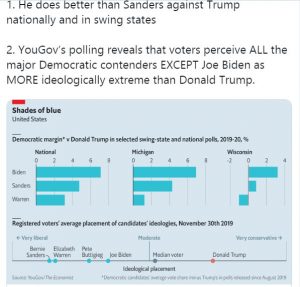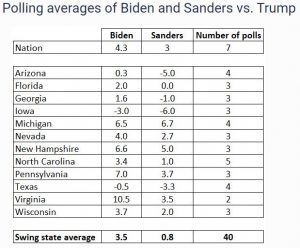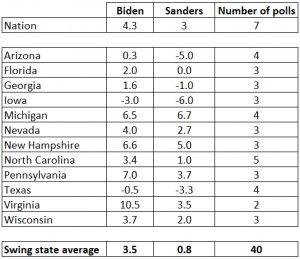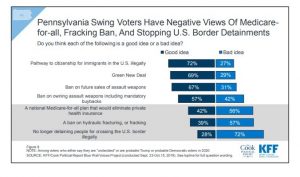The following article by Sherry Linkon, professor of English at Georgetown University and a faculty affiliate of the Kalmanovitz Initiative for Labor and the Working Poor, is cross-posted from Working-Class Perspectives:
New York Times columnist David Brooks has proven himself both interested in and repeatedly confused by the working class. A few weeks ago, in a piece arguing that Bernie Sanders is wrong to blame capitalism for economic inequality, Brooks wrote that “Class-war progressivism always loses to culture-war conservatism because swing voters in the Midwest care more about their values — guns, patriotism, ending abortion, masculinity, whatever — than they do about proletarian class consciousness.” He goes on to point out that working-class wages are going up faster than incomes for top earners, which he cites as evidence that capitalism benefits everyone.
As with so many debates about how Democrats could win support from working-class voters, Brooks presents a false choice between class and culture that betrays his inability to make sense of how class works.
Brooks chastises Sanders for misunderstanding capitalism, but Brooks misunderstands how closely class and culture are intertwined. I’ve spent the last 25 years studying that relationship, especially the way economic restructuring didn’t just undermine the social position of working-class people but also brought changes to working-class culture. Many of the “conservative values” Brooks identifies are tied to economic conditions. And class consciousness explains why, after years of stagnation and a huge shift of income and wealth to the richest Americans over several decades, some working-class people are finally gaining a little ground.
In Steeltown USA: Work and Memory in Youngstown, John Russo and I argued that a “politics of resentment” emerged in that community during the years when its steel industry was collapsing. That resentment spread throughout the region during the decade after the mills closed. Some of it was directed at institutions that people had long counted on to serve their interests – business, unions, government, churches, all of which had failed to protect them from the economic and social costs of tens of thousands of lost jobs. It grew as politician after politician made and broke promises to help. It festered as people read national media stories about how deindustrialization was part of a process of “creative destruction” that would revitalize the economy, a claim that in some ways proved true – but mostly for well-educated people on the coasts and in big cities, not for displaced steelworkers.
Resentment is a cultural response to economic struggle, and it has political consequences. In Youngstown in the early 1980s, it translated into strong support for a mob-connected, crass, political outsider, county sheriff Jim Traficant, who had stood on laid-off workers’ front lawns and refused to let them be evicted when they couldn’t pay their mortgages. Youngstown voters elected Traficant as their congressman in 1984. He served until convicted of crimes in 2002.
Forty years after Traficant’s rise, the politics of resentment have become a national (and in many ways global) trend, leading voters to reject candidates they view as elitist and entrenched in favor of those who promise to challenge and change the status quo. While we don’t think of Barack Obama as benefiting from the politics of resentment, the belief that government needed fresh blood and new ideas drew many to support him, including many white working-class people who, some feared, would never vote for a black man. Resentment contributed to Mitt Romney’s defeat in 2012, especially after he was heard dismissing “47%” of voters at a high-ticket fundraiser. Hillary Clinton made the same blunder in 2016, famously dismissing Trump supporters as “a basket of deplorables,”while Trump seemed to have successfully channeled Traficant’s populist bluster.
Among the cultural values Brooks identifies as central to the cultural wars is masculinity. I agree that this is an important cultural issue for many working-class men who feel anxious about their place in the world and therefore defensive about men’s roles. But that, too, has economic roots. When industrial jobs that offer good pay and benefits go away, men feel more than just an economic loss. For generations, a key element of masculinity was the ability to support a family. While the family wage has long been a thing of the past, men still struggle with shame and frustration over not being able to be good providers. Equally important, few of the jobs that have replaced industrial work offer men opportunities to demonstrate traditional masculine qualities like strength, toughness, or power over machinery and materials. Contemporary working-class jobs, most of which are in the service sector, pay less – not just in dollars but also in the kind of validation that these men seek.
Let’s consider the other half of Brooks’s argument, too. It’s true that wages for lower-level workers are rising, and yes, the rate of growth these days is faster for lower-income workers than for management these days. That sounds great, but it’s hardly proof that capitalism works well for everyone. Has Brooks forgotten the recent history of economic inequality? Inequality.org maps it all out clearly, showing how the incomes of the top 1% doubled between 1968 and 2017, while poverty rates held steady. Incomes for top earners have soared from around $633,000 annually in 1979 to more than $2.7 million in 2017, while incomes of the bottom 90% — that’s most of us, folks – rose by less than $10,000 a year, all the way to a grand $36,000.
But, okay – things are getting better. Why would that be? It isn’t because of productivity, as Brooks claims. Productivity and pay both increased at about the same rate between 1948 and 1979, but then productivity continued to rise while wages stagnated. A tighter labor market also makes a big difference, though it’s hard to imagine it will be enough to ever make up for the disparities of the last two decades. As the Economic Policy Institutenoted in 2018, “while wages are growing for most workers, wage growth continues to be slower than would be expected in an economy with relatively low unemployment.”
Even more important in Brooks’s misunderstanding of working-class politics is his refusal to acknowledge that class consciousness might have had anything to do with wages going up. Since 2014, 29 states and 44 localities have raised the minimum wage in their jurisdictions. And sorry, David, that’s not because bosses don’t “have workers by the throat.” It’s because workers organized to fight for economic justice. The Fight for $15 and dozens of living wage campaigns that led to states and cities hiking the minimum wage offer great examples of class consciousness in action.
No doubt, conservative politics, including opposition to immigration and gun control as well as the anxiety some white Americans feel about the country’s changing demographics – not to mention more overt white supremacism – will play a role in this year’s election. But if Democrats want to win working-class votes, they shouldn’t buy into Brooks’s either/or vision. Instead, they should recognize that what people earn, the jobs they do, the state of their communities, and their values are all intertwined.














